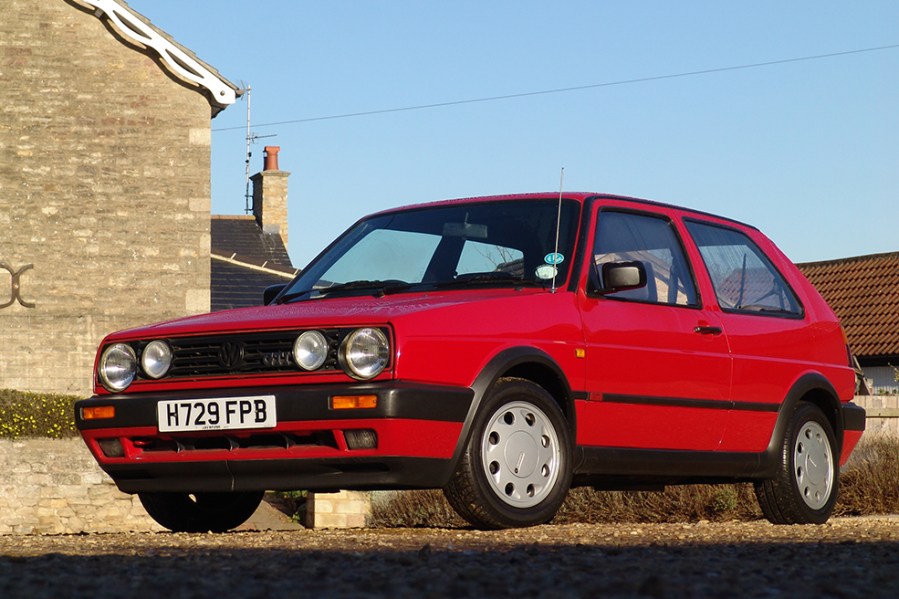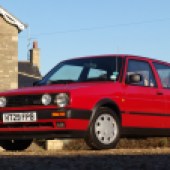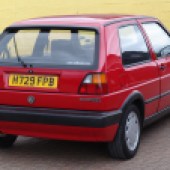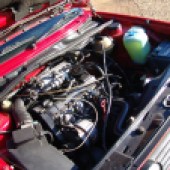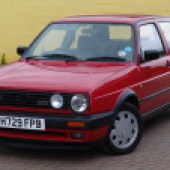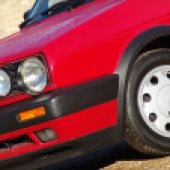The popularity and values of the Volkswagen Golf Mk2 have rocketed in recent years. Here’s what you need before splashing the cash
It’s thought that original plans for the Golf Mk2 date back to 1979, but due to design and manufacturing issues its launch was postponed. Designed in house – much like the Mk2 Scirocco – rather than by the hand of Italian designer Giorgetto Giugiaro as per the original, the first Golf Mk2 rolled off the Wolfsburg production line in late 1983. There were obvious styling links to its predecessor, albeit with a much bigger, roomier interior and a more mature character.
As far as the classic car market is concerned, the Golf Mk2 is arguably not as popular as the Mk1, but still a great deal popular than the Mk3. A great middle-ground for the leap into a classic German hatchback, then.
The Mk2 was launched in the UK in March 1984, with the initial line-up being the basic C, the slightly less spartan CL, the up-spec GL and the GTI. Engines ranged from the 1043cc unit shared with the Polo in the C, plus the 1272cc, 1595cc and 1781cc four-cylinders, the latter available with Bosch K-Jetronic in the GTI. Alongside these there was also a 1.6-litre diesel in normally aspirated and turbo spec.
In 1986 the GTI 16v was introduced, the twin-cam head endowing the GTI with 139bhp and the pace to keep up with rivals like the Escort RS Turbo. The Golf received a facelift the same year, losing the front door quarterlight windows and gaining larger grille slats.
In 1990 the four-wheel drive Syncro was added to the range, only offered with the carb-fed 1.8-litre engine for the UK market and in four-door form with anonymous styling and plain steel wheels.
From 1990 the left-hand drive limited-edition Golf Rallye was also offered in the UK as a special order, combining VW’s G60 supercharged engine with the Syncro drivetrain. The GTI received colour-coded plastic bumpers for the 1989 model year, the sought-after late-model cars being referred to as the ‘big bumper’ models.
Production of the Mk2 ended in 1991 after 6.3 million examples had been made; it was replaced by the Golf Mk3 which was launched on the UK market in early 1992.

Bodywork
Volkswagen upped its game over the Mk1 where rust was concerned, meaning the Mk2 is much better at fending it off – but it’s by no means immune, so it’s important to buy on condition and not mileage.
The inner wings in particular are a problem and unfortunately, it’s not something you can realistically check until home, as the plastic liners make it a very difficult task. Shine the torch around the front suspension sub frame to find any areas of rust there. Around the filler cap is another hotspot. Some modified cars won’t have any arch liners, so with these you’re at least able to check.
Other areas to check include sills, the bottom of doors and the rear valance – all of which are easy to access. If the model you’re eyeing up has a sunroof then the metal surround can often attract rust, so be sure to double check this, too.
It’s also wise to check out the quality of any work performed; if it’s obviously noticeable that it’s had a previous shunt of some description, then it’ll need putting right, adding to the overall cost. Mention this when haggling. Although, if you can do this work yourself or know someone who can put it right, it could be a quick win.
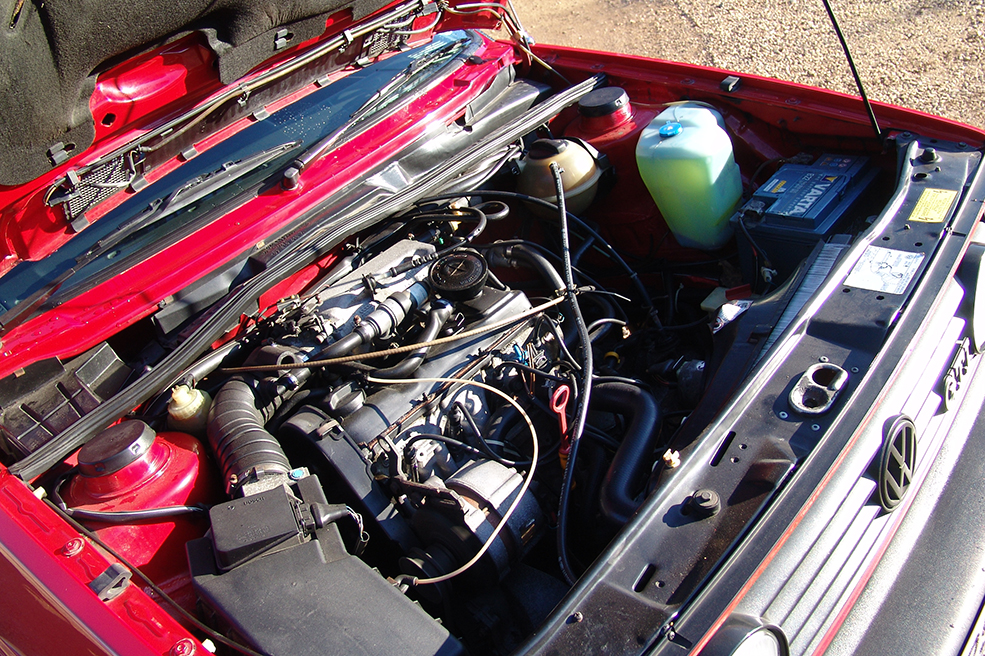
Engine and transmission
If you’ve not yet driven a Mk2, you’ll be surprised at just how familiar it is, despite some examples being more than 30 years old. The steering should be precise and the seating should be firm, with a firm ride yet not one of discomfort. It should feel solid and planted on the road.
Be aware that with early Golf Mk2 models the power steering was optional at the time; a lot of buyers decided not to spend the extra £567 and went without, so a lot of the early Mk2s on the road don’t have it. Not a deal breaker but it may put you off if you do a fair bit of urban driving.
No matter which engine you’re looking at, each unit should last well. They are renowned for having a long lifespan, providing they’ve been sufficiently cared for with regular servicing. As with any car, look out for black or blue smoke. If you see blue smoke, you could be looking at worn valves or valve stem oil seals. Either way, the result could mean a complete cylinder head rebuild – not a cheap task.
Upon test-driving any Golf Mk2, sit with the engine idling for a while before engaging gear. Listen out for any misfires or the engine simply acting out of the ordinary: erratic movements, strong vibrations etc. If these issues occur, you may just need new ignition components or be looking at problems with the complex and unreliable factory-fitted Pierburg carburettor.
A repair can often be conducted, or you can simply retrofit progressive Weber 32/34 carbs with manual choke. Often, it’s prudent to have a look on forums and internet auction sites for good condition used ones. If it’s the K-Jetronic injected GTI you fancy, adopt hawk-like abilities on the test drive. If it feels leaden then there may be a problem with an injector. These can be hard to come by new.
If the injector isn’t the issue, it could be a possible leak to one of the vacuum hoses or either a seized metering head or stuck flap to the inside of the air-flow meter. All of these are simple to sort; use them to your advantage when conducting any negotiations.
If it’s a diesel you’re after, the one to look out for is the 70bhp turbo variant or the 80bhp GTD, which benefited from the addition of an intercooler. The 54bhp non-turbo is an extremely reliable option but can be pretty slow.
If you happen upon one of the rare supercharged 1781cc G60 models – buy it! The G-Lader supercharger can be fragile so do make sure it’s been maintained well, with history to prove.
In terms of transmission, that VW build quality is again apparent. Earlier Golf Mk2 models may feature a four-speed box which, despite providing good acceleration, has little in the way of top end, resulting in high revs if travelling at high speeds. Later five-speed boxes are strong, but watch for loss of synchromesh in second gear and the possibility of differential pins exiting the side. You could have it re-built for a small fee to get them bolted in, if required.
The best options are going to be the ones that are unmolested, but these are rare nowadays with the modifying market as buoyant as it is, resulting in an unreasonable costly premium for those that’re untouched.
Tread carefully when buying any modified example. If it has previously run – or is running – coilover suspension you don’t know if ,or how long, the car been run on the bump stops, or even if it was driven with them in at all. You may find a well-looked after one in the modifying scene, however, and taking the modifications off to put it back to stock shouldn’t be too difficult a task.
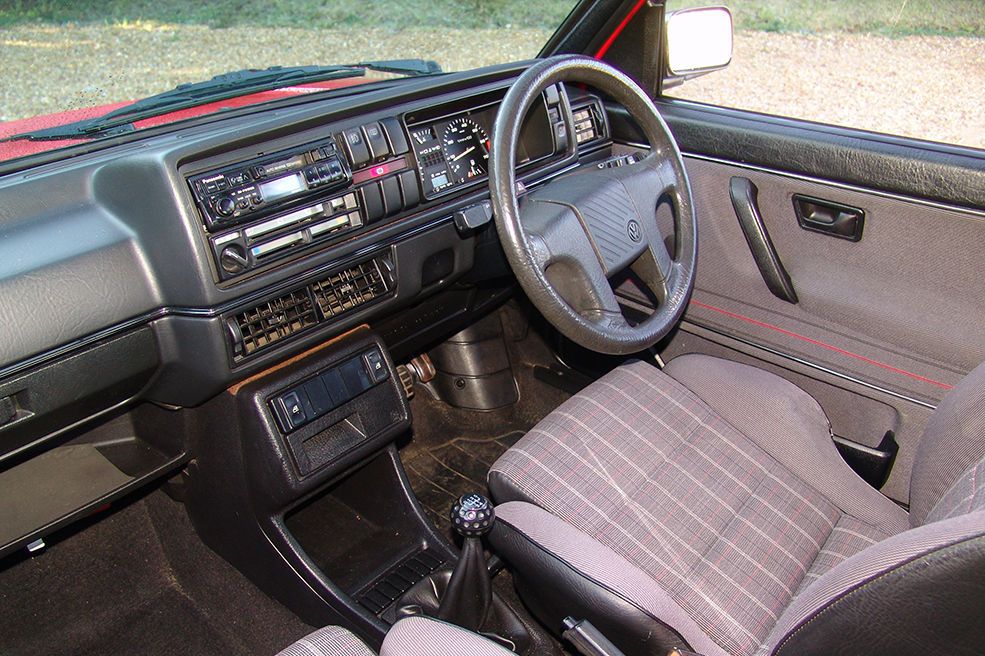
Interior and electrics
The Mk2’s interior is well ahead of its predecessor, with chunky controls and dials all of good quality. However, interior trim parts such as door cards, plastics, original steering wheels and roof lining prices are all on the rise.
Therefore, it’s wise to ensure whichever model you buy has all this intact and in good condition. Also watch that door cards are free of speaker holes. If not, make sure you have these parts already sourced, or it could cost you time and money to get your Mk2 how you want it.
Volkswagen Golf Mk2: our verdict
There’s no question that the Mk2 is a great all-rounder. It’s becoming ever more popular, so should result in a fairly decent investment if you buy right in the first place. Naturally, the bigger the pile of history that comes with the car, the better.
One of the best things about buying a Volkswagen, and specifically the Mk2 Golf, is that the parts support is pretty good. It’s a great DIY-friendly classic that you could save a fortune if you’re the hands-on type.

